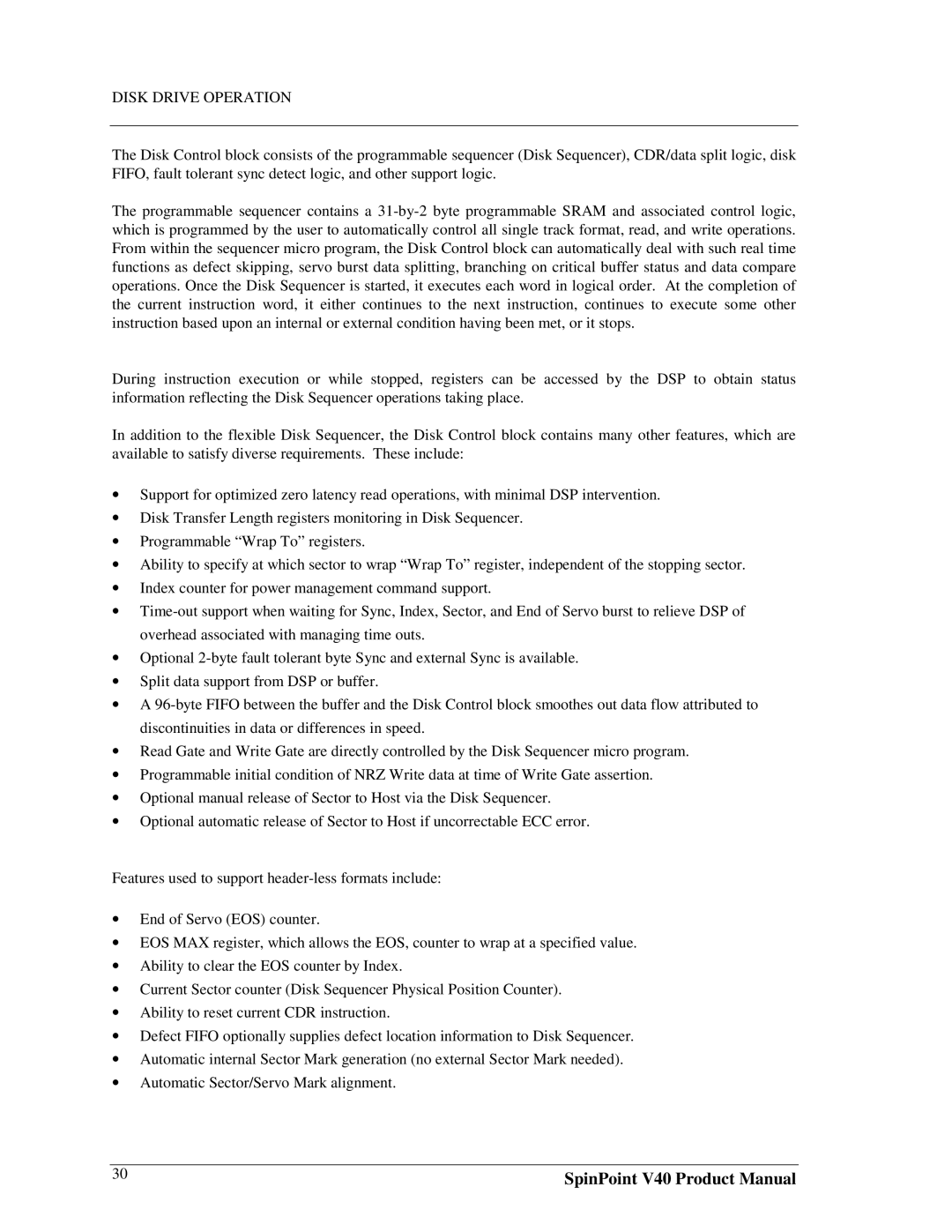DISK DRIVE OPERATION
The Disk Control block consists of the programmable sequencer (Disk Sequencer), CDR/data split logic, disk FIFO, fault tolerant sync detect logic, and other support logic.
The programmable sequencer contains a
During instruction execution or while stopped, registers can be accessed by the DSP to obtain status information reflecting the Disk Sequencer operations taking place.
In addition to the flexible Disk Sequencer, the Disk Control block contains many other features, which are available to satisfy diverse requirements. These include:
•Support for optimized zero latency read operations, with minimal DSP intervention.
•Disk Transfer Length registers monitoring in Disk Sequencer.
•Programmable “Wrap To” registers.
•Ability to specify at which sector to wrap “Wrap To” register, independent of the stopping sector.
•Index counter for power management command support.
•
•Optional
•Split data support from DSP or buffer.
•A
•Read Gate and Write Gate are directly controlled by the Disk Sequencer micro program.
•Programmable initial condition of NRZ Write data at time of Write Gate assertion.
•Optional manual release of Sector to Host via the Disk Sequencer.
•Optional automatic release of Sector to Host if uncorrectable ECC error.
Features used to support
•End of Servo (EOS) counter.
•EOS MAX register, which allows the EOS, counter to wrap at a specified value.
•Ability to clear the EOS counter by Index.
•Current Sector counter (Disk Sequencer Physical Position Counter).
•Ability to reset current CDR instruction.
•Defect FIFO optionally supplies defect location information to Disk Sequencer.
•Automatic internal Sector Mark generation (no external Sector Mark needed).
•Automatic Sector/Servo Mark alignment.
30 | SpinPoint V40 Product Manual |
